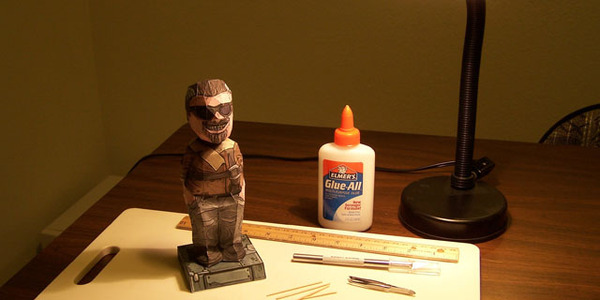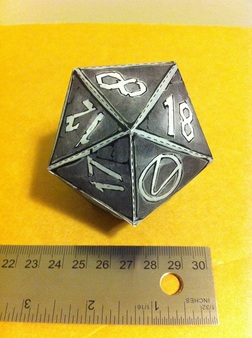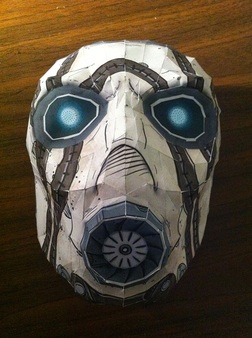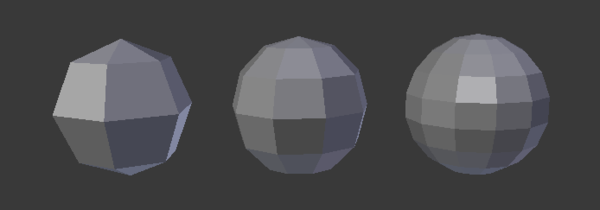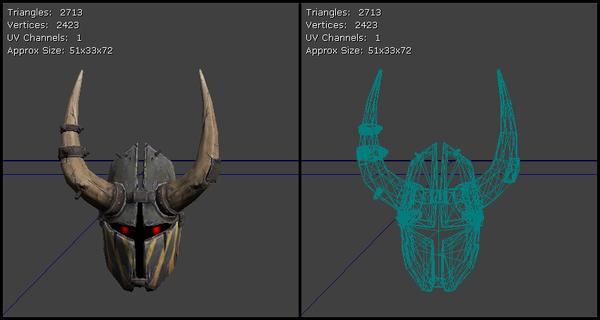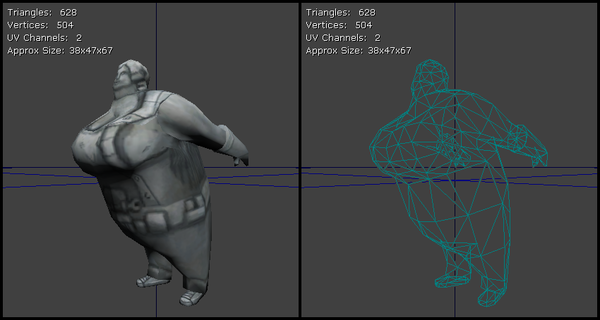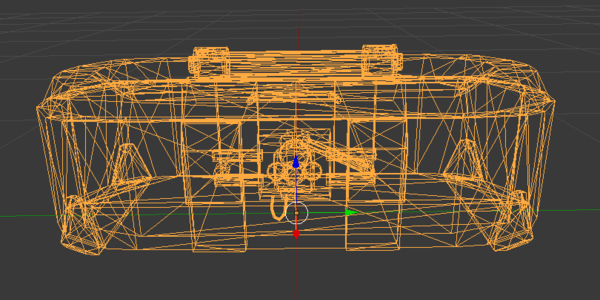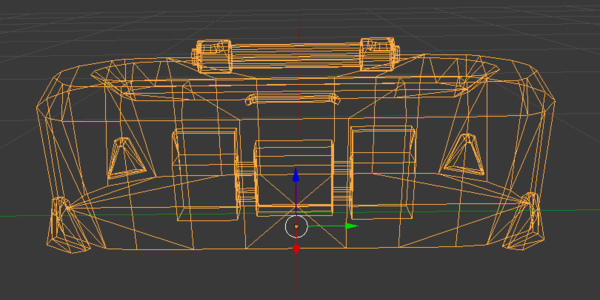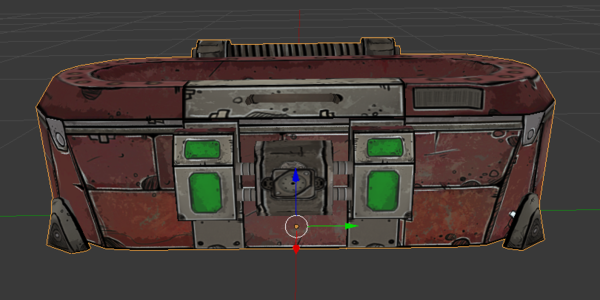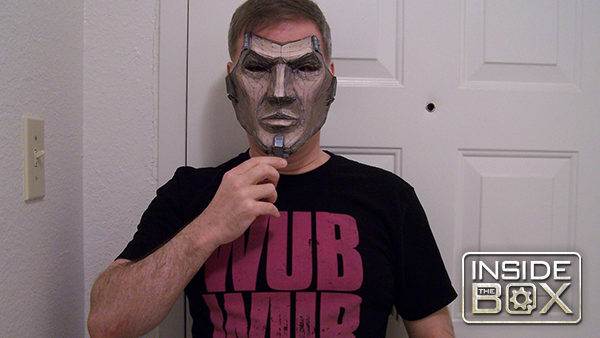
Inside the Box serves as a forum for individuals involved in the production of Gearbox Software content to share personal motives, methods, process and results. Gearbox Software projects are created by a diverse range of individuals spanning a spectrum of different backgrounds, interests, objectives and world views. The views and opinions expressed in this article are those of the author and do not necessarily reflect the official policy or position of Gearbox Software or any of its individual members outside of the author.
Hi! I’m Jeff Broome. I’ve been a programmer here at Gearbox for 11 years. On our forum, I’m known as “botman”, and I’m here to tell you about a hobby of mine that makes use of the assets from some of the games that Gearbox has released. My hobby is making papercraft models from game assets. When I was a boy, my older brother and I loved to build models. We built model cars, model planes, and even model rockets which we would launch into the air from a field near our house. I’ve always loved working with computers and I’ve always loved working with my hands building things, so making papercraft models gives me a way to do both.
Papercraft models are created by printing out designs on sheets of paper, cutting them out, folding the pieces and gluing them together. It’s an inexpensive way to create your own models. There are some very simple and easy to assemble papercraft models for a novice builder and there are some that are much more intricate and time consuming for the more advanced builder. It doesn’t take a lot of skill or tools to get started and you can build something to keep forever that you can be proud of. When you become more familiar with the tools used to create papercraft models you can create your own designs. The only limit is your imagination and the time it takes to build the model.
I first got interested in papercraft about 3 or 4 years ago when I saw some Cubee (//www.cubeecraft.com/) designs for some of the characters from the TV show Futurama. Soon after, I wanted to learn to make my own papercraft models and began researching how to do that. I discovered a Windows application call Pepakura (//www.tamasoft.co.jp/pepakura-en/) that allows you to take a 3D model from a game and generate the layout necessary to print out the design on paper and build a papercraft model from that.
To understand how Pepakura works, it helps to understand how to create a 3D model of an object in a game. The model can be anything; an airplane, a boat, an automobile, a skyscraper, a person, an alien monster, anything at all. The model is composed of polygons (or ‘polys’). A polygon is a flat geometric figure with some number of straight sides. A square, a rectangle, a triangle, and an octagon are all examples of polygons. When drawing (or rendering) objects in video games, the graphics hardware is designed to work best with only triangles or quadrilaterals (four sided polygons). So any 3D model that we create for a game needs to be constructed from a combination of triangles and quadrilaterals. This means if you want to have a curved shape (like a sphere), you have to create it using a bunch of tiny triangles and quadrilaterals instead.
To create the models in games, we use a variety of 3D modeling tools like 3D Studio Max and Maya. When I work on creating a model for papercraft, I use a free 3D modeling program called Blender (//www.blender.org/). Another tool that can be used to make 3D models is Google’s Sketchup (//sketchup.com/).
You create a 3D model by typically starting out with a cube and use the tools available in the 3D modeling software (like 3D Studio Max) to add on additional polygons to create the final shape that you want. For example, here’s an Instructable tutorial on how to create a simple 3D model of a house using Sketchup: //www.instructables.com/id/How-to-make-your-first-3D-model/
This is the same sort of process used by artists here at Gearbox to build the 3D models we use in the games that we create, but obviously, the 3D models that are created for games are much more detailed and complex. For example, here’s the 3D model for Captain Flynt’s mask from Borderlands 2 showing what you would see in the game along with the wireframe drawing that shows the polygons that make up that model.
Notice that this 3D model has 2,713 triangles (polygons) in it. If this were to be converted to a papercraft model, it would take a long time to cut out and assemble those 2,713 triangles.
For comparison, here’s the 3D model of the Ellie hood ornament that you pick up during the game.
Notice that this model has much fewer triangles and would be a little easier to put together as a papercraft model. But even 628 triangles is quite a bit of work to put together, so when I work on a papercraft model, I like to edit the mesh (the collection of polygons) in the 3D model to reduce the number of polygons as much as I can without losing the overall shape of the model. In 3D Studio Max, there is a Modifier tool called “Optimize” that will reduce the number of polygons in a mesh without losing too much of the shape. Other 3D modeling applications have similar tools but sometimes you have to reduce the mesh by hand by manually combining several connected polygons into a single polygon. It can be a laborious and time consuming process but is necessary in cases where the automated tools just don’t do a very good job of simplifying the mesh.
When I wanted to make a papercraft model of the red loot chest in the Borderlands game, I started with the 3D model from the game which looked like this.
Notice all the little polygons around the knobs of the locking mechanism on the front of the loot chest. Also notice that this loot chest model from the game has an interior wall and an exterior wall (to give the body of the chest a “thickness”). The papercraft chest I wanted to make wouldn’t open up so there was no need for an interior wall, so I deleted all of those polygons. Here’s the final simplified version of the loot chest.
And here’s what the final papercraft version of the red loot chest looks like.
It is best to use heavy weight paper for the large papercraft models. Paper weight of 65 lbs (244 gsm) or heavier is best. If you use regular photocopy or standard printer paper, the model will be flimsy and can collapse under its own weight.
I like to use a hobby knife to cut everything out and I use the metal edge of a wooden ruler as a guide when folding pieces (so I get a nice clean straight fold). I use white school glue to attach the pieces together and use a toothpick as a “brush” to apply the glue. Sometimes it helps to use tweezers to hold really small parts.
Here are some .PDF files that you can view and print out if you want to make some of these papercraft models:
Bandit Mask(720KB)
Red Loot Chest (1.1MB)
Golden Loot Chest (1.4MB)
Handsome Jack Mask (846KB)
Marcus Bobblehead (446KB)
I hope you’ve enjoyed this brief discussion of one of my hobbies and hope to see some of your creations on the forums.
If you have any feedback on the articles or what you want to see here on Inside the Box, please let us know at [email protected] or hit up our forums.


